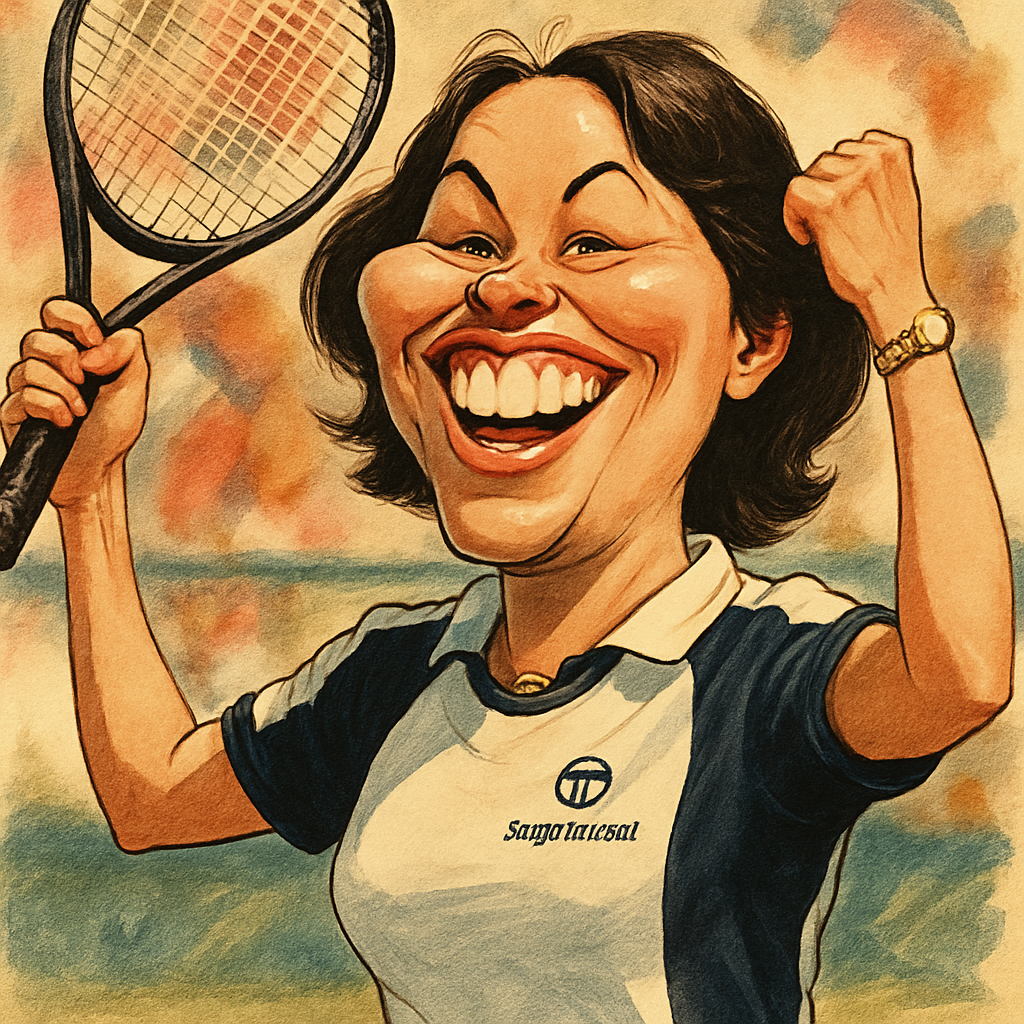ZURICH — It’s a sight that has captivated tennis fans and nostalgia enthusiasts alike: Martina Hingis, the Swiss Miss who once dominated the sport with her precocious genius, looking virtually unchanged nearly two decades after her second and final retirement from professional tennis.
Recent social media posts and public appearances have shown a radiant Hingis, now 43, whose youthful appearance belies the passage of time. This ageless quality has become a talking point, especially as it coincides with the anniversary of a controversial chapter in her career: the 2007 doping ban that precipitated her initial retirement from the sport.
The "Swiss Miss" Phenomenon: A Career of Firsts
Hingis burst onto the global scene as a teenager, becoming the youngest-ever Grand Slam champion in the 20th century when she won the 1997 Australian Open women's singles title at just 16 years and 3 months. She quickly ascended to the World No. 1 ranking, a spot she held for a total of 209 weeks. Her game was not built on overpowering strength but on what many described as a chess-like intelligence on the court.
- Strategic Mastery: Renowned for her exceptional anticipation, variety of shots, and tactical brilliance.
- Complete Player: She achieved a Career Grand Slam in doubles, showcasing her all-court prowess.
- Historic Dominance: In 1997, she won three of the four Grand Slam singles titles.
Her rivalry with the power hitters of the era, like the Williams sisters and Lindsay Davenport, defined a transitional period in women's tennis. As one sports commentator noted, "Hingis didn't just play the game; she thought three moves ahead of everyone else."
The 2007 Scandal: Cocaine and Controversy
The pinnacle of her comeback in the mid-2000s was tragically cut short during the 2007 Wimbledon Championships. Hingis tested positive for benzoylecgonine, a metabolite of cocaine. The news sent shockwaves through the tennis world. Hingis vehemently denied ever using the drug, but faced with the test result and a looming two-year suspension from the International Tennis Federation (ITF), she made a stunning announcement.
At a press conference, a defiant yet emotional Hingis stated, "I am frustrated and angry. I have no desire to spend the next several years of my life fighting the ITF. With that said, I have no choice but to retire from the sport." She maintained her innocence, suggesting the positive test could have been the result of contamination, but said she lacked the will and financial resources to engage in a protracted legal battle.
The ITF tribunal accepted that Hingis did not take the substance to enhance her performance but still found her liable for the banned substance in her system. They handed down a two-year ban, backdated to the test, and stripped her of the ranking points and prize money she had earned at Wimbledon.
Life After the Ban: A Triumphant and Tranquil Return
Far from disappearing, Hingis's retirement marked the beginning of a new, highly successful chapter. After her ban ended, she returned to the tour exclusively in doubles and mixed doubles, displaying the same tactical mastery that defined her youth.
- Doubles Dominance: She secured 10 more Grand Slam titles in women's and mixed doubles.
- Olympic Silver: She won a silver medal in women's doubles at the 2016 Rio Olympics.
- World No. 1 Again: She regained the World No. 1 ranking in doubles in 2015.
This successful second act, which concluded with a final retirement in 2017, allowed her to leave the sport on her own terms, rewriting the narrative of her career's end. She has since focused on coaching, horse riding—a lifelong passion—and enjoying family life, largely away from the relentless glare of the media spotlight.
The Secret to Her Youthful Glow? A Life in Balance
Fans often speculate on the secret to Hingis's remarkably youthful appearance. The answer seems to lie not in a single elixir but in a balanced and fulfilled life post-tennis. Unlike many athletes who struggle with the transition, Hingis seamlessly moved into new passions. Her mother and longtime coach, Melanie Molitor, once said, "Martina always had an old soul in a young body. Now, she has a young spirit in a timeless body."
Key factors contributing to her serene and healthy lifestyle include:
- Equestrian Pursuits: She is an accomplished equestrian, a sport that provides both physical activity and a deep connection with animals.
- Low-Key Lifestyle: She maintains a relatively private life in Switzerland with her husband, David Bickle, and their circle of friends.
- Passion for Coaching: She has engaged in coaching, sharing her vast knowledge with the next generation without the pressure of competition.
This contrast between the high-pressure world of professional sports and her current tranquil existence is stark. It suggests that for Hingis, stepping away from the tour's intense demands has been a key ingredient in preserving her health and vitality.
Legacy: More Than a Doping Headline
While the 2007 scandal remains a part of her story, it is no longer the defining chapter. Today, Martina Hingis is celebrated as one of the most intelligent and gifted players to ever grace a tennis court. Her legacy is that of a child prodigy who fulfilled her promise, faced adversity, and crafted a triumphant and happy life after competition.
Her enduring youth serves as a powerful visual metaphor for her career: timeless. As one fan aptly put it on a social media post, "The doping ban tried to write her final chapter, but Martina Hingis is clearly the author of her own story." Nearly twenty years on, that story continues to be one of grace, resilience, and an ageless love for the game she once ruled.

